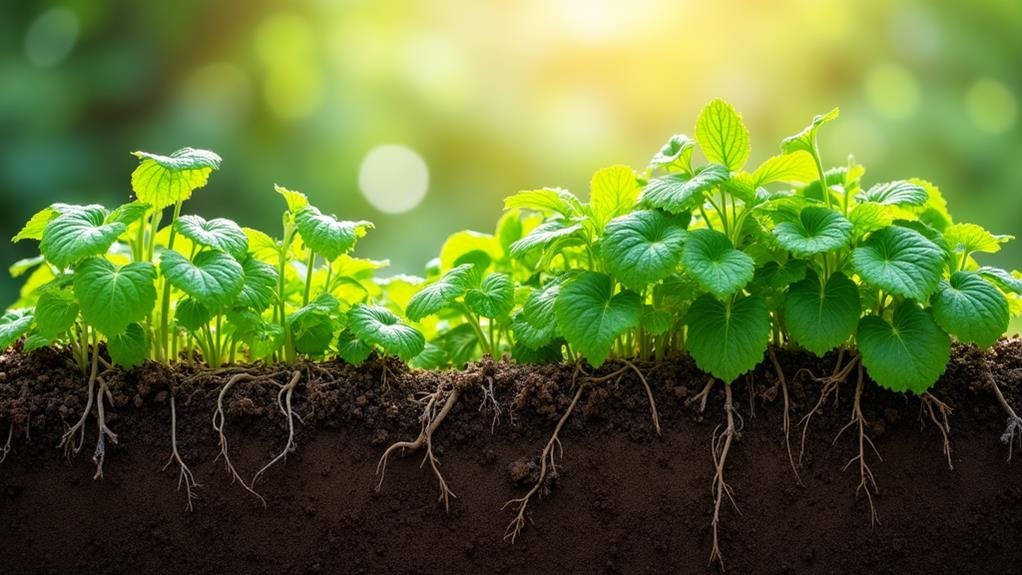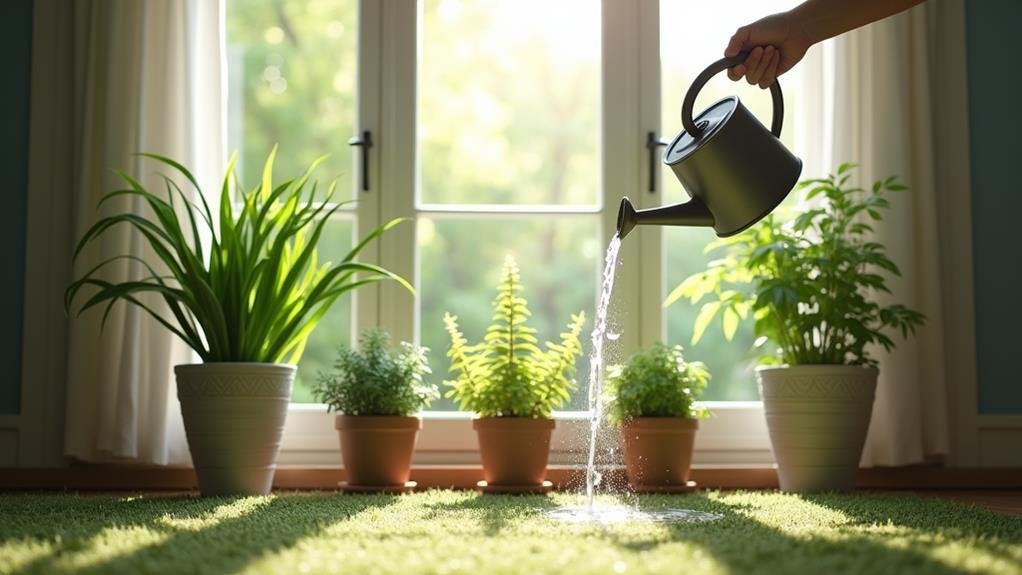You might not realize just how critical moisture levels are for the health of your plants. Proper hydration influences not only their growth and vigor but also their ability to absorb essential nutrients. If you're not careful, you could easily tip the balance toward overwatering or underwatering, leading to a range of issues from wilting leaves to root rot. Understanding the signs and knowing how to measure moisture can make all the difference. So, what strategies can you implement to guarantee your plants thrive?
Importance of Soil Moisture

In relation to nurturing healthy plants, understanding the importance of soil moisture can't be overlooked. Soil moisture directly affects plant growth, as it plays a key role in nutrient absorption and overall health. Without adequate moisture, plants struggle to take up essential nutrients from the soil, leading to stunted growth and poor health.
You need to find that perfect balance—too little moisture causes stress, while too much can drown roots and promote disease. Regularly checking soil moisture allows you to provide the right amount of water your plants need, ensuring they thrive.
Different plants have varying moisture requirements, so it's essential to know what your specific plants need. For example, succulents prefer drier conditions, while tropical plants thrive in consistently moist soil.
Using mulch can help retain soil moisture, reducing the frequency of watering while keeping roots cool. Additionally, consider investing in moisture meters, which provide a more accurate reading of your soil's moisture levels.
With the right attention to soil moisture, you'll set your plants up for success, creating a vibrant and flourishing garden. Remember, happy plants lead to a happy gardener!
Signs of Overwatering
Recognizing the balance in soil moisture is essential, as too much water can lead to serious problems for your plants. One of the first signs of overwatering is yellowing leaves. If you notice your plant's leaves turning a sickly yellow, it might be time to check the soil moisture.
Another indicator is wilting, which seems counterintuitive, but overwatered roots can't absorb nutrients properly, causing the plant to droop.
Check for mold or a musty smell around the soil surface; these are clear signs of excessive moisture. Root rot is another severe consequence of overwatering. If you gently remove the plant from its pot and see black, mushy roots, it's a sure sign that you've been too generous with the watering can.
You might also notice your plant dropping leaves or stunted growth. If your once-thriving greenery starts to look sad, it's time to reassess your watering schedule.
Signs of Underwatering

When plants suffer from underwatering, their distress often shows in unmistakable ways. One of the first signs you'll notice is wilting leaves. Instead of standing tall and firm, they droop and lose their vibrancy. You might also see leaf edges turning brown or crispy, a clear indication your plant is parched.
The soil might feel dry to the touch, pulling away from the pot's edges, which can make it hard to gauge how much moisture is really there.
Another sign is stunted growth. If your plant seems to be growing slower than usual or has stopped producing new leaves, it could be crying out for water. Additionally, some plants may start shedding leaves entirely as a survival tactic, prioritizing their energy for the leaves that remain.
If you notice any of these signs, it's time to take action. Water your plant thoroughly, ensuring the moisture reaches the roots.
Keep an eye on it afterward, as recovery may take some time. With proper care, your plant will bounce back, reminding you just how resilient they can be.
Measuring Soil Moisture
Accurate soil moisture measurement is essential for maintaining plant health. You can't just rely on your instincts or the weather forecast; you need reliable methods to know when your plants need water.
One popular tool for this is a soil moisture meter. These handy devices insert into the soil and provide a quick reading of moisture levels. Simply follow the instructions, and you'll get a clear indication of whether your plants are thirsty.
If you prefer a more hands-on approach, you can try the "finger test." Just stick your finger into the soil up to about two inches. If it feels dry, it's time to water. However, this method may not be as precise, especially in larger pots or garden beds.
Another technique is weighing your pots. When the soil is wet, pots will be heavier. After watering, note the weight and check back in a few days.
Watering Techniques for Plants
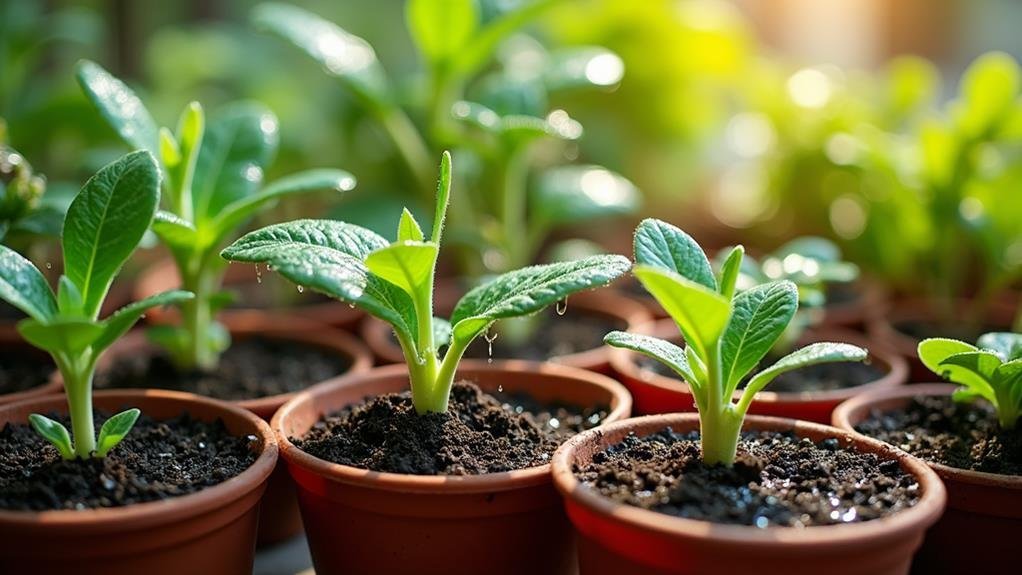
Effective watering techniques play an essential role in ensuring your plants thrive. First, consider the timing of your watering. Early morning is often the best time, as it allows moisture to soak into the soil before the sun heats it up. This method helps prevent evaporation, ensuring your plants get the hydration they need.
When watering, aim for the base of the plant rather than soaking the leaves. This way, you direct the water where it's most needed and reduce the risk of fungal diseases.
Additionally, you want to water deeply but infrequently. This encourages roots to grow deeper into the soil, making your plants more resilient during dry spells.
Using tools like drip irrigation or soaker hoses can also be beneficial, as they deliver water directly to the roots while minimizing waste. If you're using a watering can or hose, try to water slowly, allowing the soil to absorb moisture rather than creating runoff.
Remember to check the soil moisture regularly; overwatering can be just as harmful as underwatering. With these techniques, you'll set your plants up for success, keeping them lush and vibrant throughout the growing season.
Seasonal Watering Adjustments
Adapting your watering schedule to the changing seasons is essential for maintaining ideal moisture levels in your plants. As temperatures rise in spring and summer, your plants typically require more water due to increased evaporation and growth. You might find yourself watering more frequently, particularly for outdoor gardens or potted plants that dry out quicker.
In contrast, autumn and winter bring cooler temperatures and often higher humidity, which can reduce your plants' water needs. During these months, it's wise to cut back on watering, allowing the soil to dry out more between sessions. Overwatering in colder months can lead to root rot, so keep an eye on soil moisture levels.
Additionally, consider your plant types. Some plants, like succulents, thrive on less water and may need even less during the colder months. On the flip side, tropical plants may still need regular watering.
Effects of Humidity on Plants
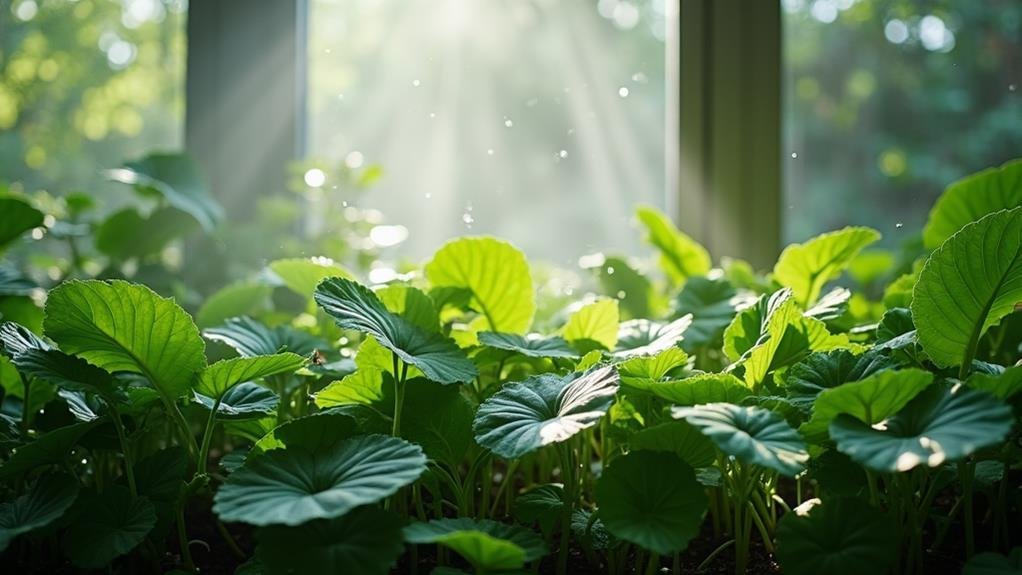
Humidity plays a significant role in the health of your plants, influencing their growth and overall vigor. When humidity levels are too low, your plants may struggle to retain moisture, leading to wilting and browning of leaves. This can make them more susceptible to pests and diseases, affecting their long-term health.
Conversely, high humidity can create a damp environment that promotes fungal growth and root rot, which can be just as detrimental.
You might notice that certain plants thrive in specific humidity levels. Tropical plants, for example, often prefer higher humidity, while succulents and cacti do better in drier conditions. It's essential to monitor humidity in your indoor spaces, especially during seasonal changes. Using a hygrometer can help you keep track of moisture levels, allowing you to make adjustments as needed.
To support your plants, consider grouping those with similar humidity needs together. This can create a microenvironment that benefits everyone involved.
Best Practices for Watering
To keep your plants thriving, it's essential to nail down your watering routine. First, check the moisture level of your soil before watering. Stick your finger about an inch deep into the soil; if it feels dry, it's time to water. This prevents overwatering, which can lead to root rot and other issues.
When you water, do it thoroughly. Instead of a light sprinkle, aim for deep, even saturation. This encourages roots to grow deeply, making your plants more resilient.
Watering in the early morning or late afternoon helps reduce evaporation and allows plants to absorb moisture effectively.
Be mindful of your plant's specific needs, as different types require varying amounts of water. For instance, succulents prefer drier conditions, while tropical plants thrive in consistently moist soil.
Lastly, use room temperature water whenever possible. Cold water can shock plants, hindering their growth.
Choosing the Right Soil Mix
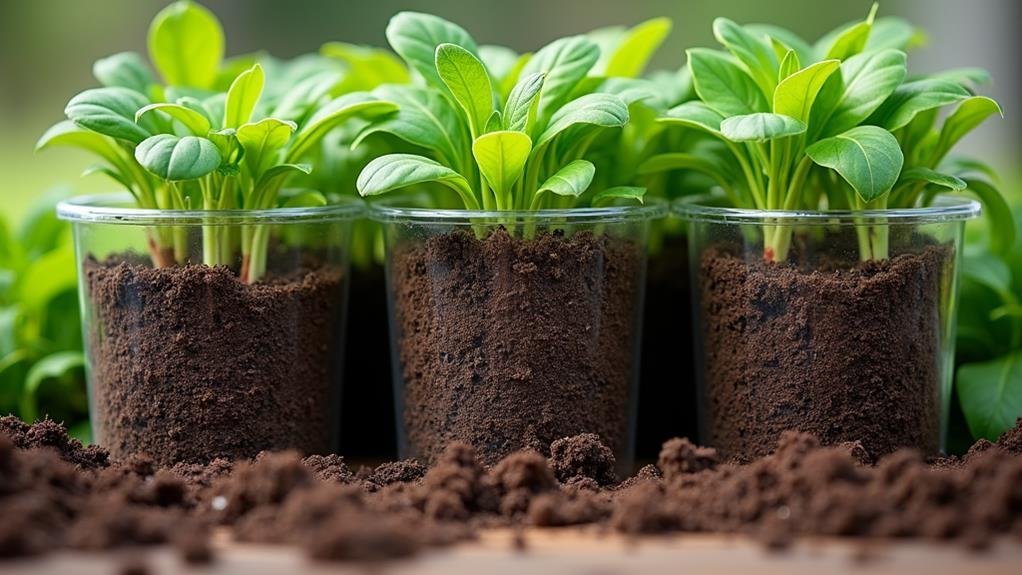
Selecting the right soil mix is crucial for your plants' overall health and growth. A good soil mix not only provides the necessary nutrients but also helps retain moisture without becoming waterlogged.
Depending on the type of plants you're growing, your soil should cater to their specific needs. For instance, succulents thrive in a well-draining mix, while tropical plants often prefer a more moisture-retentive blend.
When choosing a soil mix, consider factors like texture, pH, and drainage. A combination of peat moss, perlite, and compost can create a balanced environment for many houseplants.
Don't forget about the importance of organic matter; it improves soil structure and increases nutrient availability.
You might also want to check if your mix contains additives, such as fertilizers or mycorrhizal fungi, which can promote root growth and overall plant health.
Conclusion
In conclusion, maintaining the right moisture levels is essential for your plants' health. By recognizing the signs of overwatering and underwatering, and using effective measuring techniques, you can guarantee your plants thrive. Adjust your watering practices seasonally and consider humidity's impact on moisture needs. Remember, choosing the right soil mix is just as important. With these best practices, you'll be well on your way to creating a flourishing garden that brings you joy and satisfaction.

